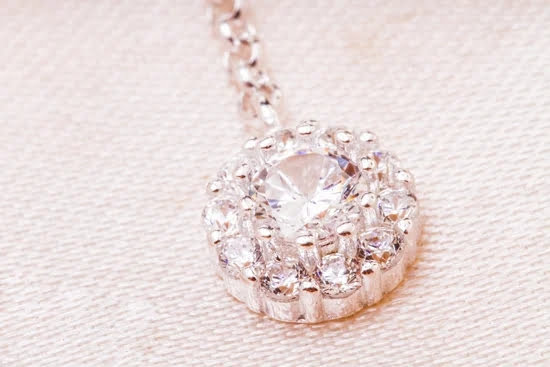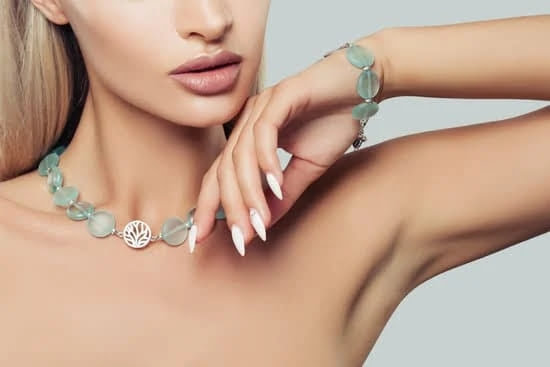What makes fine jewelry truly stand out as a timeless and cherished accessory? The answer lies in its rich history, superior materials, exquisite craftsmanship, and deep symbolism. From ancient civilizations to modern day, fine jewelry has held a special place in human culture and society. In this article, we will explore the various aspects that make fine jewelry a treasured possession for many.
The history of fine jewelry dates back to ancient times when it was used as a symbol of wealth, status, and power. From elaborate Egyptian necklaces to intricate Roman brooches, the evolution of fine jewelry reflects the changing customs and beliefs of each era. Over time, different cultures have contributed to the artistry and design of fine jewelry, shaping its significance in today’s world.
One crucial element that sets fine jewelry apart is the materials used in its creation. Gold, silver, and platinum have long been favored for their durability and lustrous beauty. Additionally, the incorporation of precious gemstones such as diamonds, rubies, sapphires, and emeralds adds an extra layer of sophistication and luxury to these stunning pieces. The careful selection and use of these materials elevate fine jewelry to a level of unparalleled elegance.
The Materials of Fine Jewelry
The Timeless Appeal of Gold
When it comes to fine jewelry, gold has always been the metal of choice for centuries. Its timeless appeal and durability make it a popular choice for crafting exquisite pieces that stand the test of time. Whether it’s 24 karat, 18 karat, or 14 karat gold, each provides a lustrous and elegant finish that enhances the beauty of any gemstone it accompanies.
The Allure of Silver
Silver is another highly sought-after metal in the world of fine jewelry. Known for its brilliant luster and affordability compared to gold, silver has been used in jewelry-making since ancient times. It complements a wide range of gemstones and adds a touch of sophistication to any piece. With proper care, sterling silver jewelry can last for generations, making it a timeless investment.
The Prestige of Platinum
Platinum is considered the most prestigious metal in fine jewelry due to its rarity, purity, and strength. It is known for its exceptional durability and resistance to tarnish, making it an ideal choice for items designed to be worn daily. While platinum jewelry may come with a higher price tag than gold or silver, its luxurious appeal and enduring quality make it highly coveted in the world of fine jewelry.
The Art of Gemology
Gemology is the study of gemstones and their characteristics, which has played a significant role in elevating fine jewelry to the next level. Precious stones such as diamonds, rubies, sapphires, and emeralds are highly valued for their rarity, beauty, and durability. These gems are often the focal point of fine jewelry pieces and have been revered for centuries across different cultures.
One of the key factors that makes fine jewelry truly stand out is the quality and uniqueness of its gemstones. The color, clarity, cut, and carat weight of a precious stone can significantly impact its value and appeal. For example, a flawless diamond with a perfect cut will command a much higher price than an imperfect one. This emphasis on quality and individuality is what sets fine jewelry apart from other types of accessories.
In addition to their aesthetic value, precious stones in fine jewelry often hold symbolic meaning. For example, diamonds are commonly associated with love and commitment, making them a popular choice for engagement rings. In many cultures, specific gemstones are believed to possess certain properties or powers that bring luck, protection, or healing to the wearer. This combination of visual allure and deeper significance adds another layer to what makes fine jewelry truly special.
| Gemstone Characteristics | Impact on Value |
|---|---|
| Color, Clarity, Cut | Significant impact on value and appeal |
| Symbolic Meaning | Adds depth and significance to fine jewelry |
The Craftsmanship Behind Fine Jewelry
When it comes to fine jewelry, one of the most crucial elements that sets it apart is the level of craftsmanship that goes into its creation. The age-old debate between handmade and mass-produced jewelry continues to be a point of contention, with proponents on both sides advocating for their preferred method.
The Art of Handmade Jewelry
Handmade fine jewelry is often considered the pinnacle of craftsmanship, as each piece is meticulously crafted by skilled artisans who pour their expertise and passion into every detail. This level of attention to detail results in unique, one-of-a-kind pieces that exhibit a level of individuality and artistry that cannot be replicated by mass production methods.
Additionally, handmade jewelry often involves traditional techniques that have been passed down through generations, adding a sense of cultural significance and historical value to each piece.
The Appeal of Mass-Produced Jewelry
On the other hand, mass-produced fine jewelry offers affordability and accessibility to consumers who may not have the means to invest in handmade pieces. Modern technology and machinery have also advanced mass production methods, allowing for intricate designs and precise detailing to be replicated at a larger scale. Additionally, some argue that the uniformity of mass-produced jewelry allows for consistency in quality and design.
Finding the Perfect Balance
In today’s market, there is room for both handmade and mass-produced fine jewelry. Many jewelers are finding ways to marry the best of both worlds by incorporating handcrafted elements into their production process while still utilizing modern technology for efficiency. Ultimately, what makes fine jewelry truly exceptional is not just the method of production but rather the skill, creativity, and dedication that go into each piece, regardless of how it was made.
The Symbolism and Meaning of Fine Jewelry
Fine jewelry carries a significance that goes beyond its beauty and aesthetics. Throughout history, it has been used to symbolize status, wealth, and power. In ancient times, fine jewelry was reserved for royalty and the elite, serving as a representation of their social standing. Even today, wearing fine jewelry can convey a sense of sophistication and luxury.
In addition to status symbols, fine jewelry often holds deep personal meanings for the wearer. Whether it’s a family heirloom passed down through generations or a piece given as a gift to mark a special occasion, such as an engagement or anniversary, fine jewelry becomes intertwined with memories, love, and emotions. This emotional connection adds another layer of significance to these precious pieces.
Furthermore, many cultures have specific traditions and customs associated with fine jewelry. For example, wedding rings are universally recognized symbols of love and commitment. In some cultures, certain gemstones are believed to bring good luck or have protective powers. The symbolism behind fine jewelry varies across different societies but all share the common thread of expressing values and beliefs through these exquisite adornments.
| Symbolism | Meaning |
|---|---|
| Status | Representing wealth and power |
| Emotional Connection | Family heirlooms, special occasions |
| Cultural Traditions | Wedding rings, gemstone beliefs |
The Importance of Quality and Durability in Fine Jewelry
When it comes to fine jewelry, one of the key factors that sets it apart from other types of jewelry is its unparalleled quality and durability. Fine jewelry is designed to last a lifetime, making it a timeless investment for anyone who appreciates the craftsmanship and beauty of these pieces. Here are some reasons why quality and durability are so important in fine jewelry:
- Quality materials: Fine jewelry is typically made from high-quality materials such as gold, silver, and platinum, which are known for their longevity and resistance to tarnishing or corrosion.
- Expert craftsmanship: Fine jewelry is often handcrafted by skilled artisans who pay meticulous attention to detail, ensuring that each piece is not only aesthetically pleasing but also structurally sound.
- Long-lasting beauty: Fine jewelry is designed to withstand everyday wear and tear while maintaining its luster and beauty, making it suitable for daily wear as well as special occasions.
What makes fine jewelry truly stand out in terms of quality and durability is the combination of superior materials, expert craftsmanship, and timeless design. Unlike fashion jewelry or costume jewelry, which may be more affordable but often lacks the same level of craftsmanship and longevity, fine jewelry is built to last for generations.
Investing in fine jewelry means acquiring pieces that can be passed down as heirlooms or cherished for years to come. Whether it’s a classic pair of diamond stud earrings or an intricately designed gold bracelet, fine jewelry holds both sentimental value and lasting quality that make it a worthwhile addition to any collection.
Ultimately, the importance of quality and durability in fine jewelry lies in its ability to transcend trends and fads, offering a timeless elegance that never goes out of style.
The Role of Fine Jewelry in Fashion and Culture
Fine jewelry has played a significant role in fashion and culture throughout history, making a statement with its timeless elegance and beauty. Whether worn as an accessory or as a symbol of status and wealth, fine jewelry holds a special place in the world of fashion. Here are some ways in which fine jewelry makes a statement in both fashion and culture:
- Fine jewelry as a status symbol: Throughout history, wearing fine jewelry has been a way to display one’s wealth and social status. From ancient civilizations to modern-day society, the wearing of luxurious pieces has been associated with power, influence, and prestige.
- Expression of personal style: Fine jewelry allows individuals to express their personal style and taste. Whether it’s a classic diamond necklace or a bold cocktail ring, the choice of fine jewelry can speak volumes about one’s personality and preferences.
- Cultural significance: In many cultures around the world, fine jewelry holds deep cultural and religious significance. From wedding traditions to coming-of-age ceremonies, the giving and wearing of fine jewelry are intertwined with important cultural rituals and customs.
- Making a fashion statement: Fine jewelry has the ability to elevate any outfit and make a bold fashion statement. Whether it’s adding a touch of glamour to a little black dress or bringing sparkle to everyday ensembles, fine jewelry can transform any look from ordinary to extraordinary.
Overall, what makes fine jewelry such an essential part of fashion and culture is its ability to convey meaning, status, personal style, cultural significance while making an undeniable statement of luxury and elegance.
The Investment Value of Fine Jewelry
In conclusion, the allure of fine jewelry lies in its deep-rooted history, exquisite materials, expert craftsmanship, and timeless significance. Fine jewelry has been prized since ancient times and continues to be a symbol of status, wealth, and love.
The enduring appeal of gold, silver, platinum, and precious stones adds value and elegance to each piece. Whether it’s the artistry behind a handmade creation or the meticulous attention to detail in mass production, the craftsmanship behind fine jewelry is what sets it apart.
Moreover, fine jewelry holds significant meaning beyond its aesthetic appeal. It serves as a form of self-expression and carries emotional value for both the giver and the recipient. From engagement rings to family heirlooms, these pieces become cherished keepsakes that are passed down through generations.
Furthermore, the investment value of fine jewelry cannot be overlooked. As a tangible asset with intrinsic value, it holds its worth over time and often appreciates in value. This makes it a smart choice for those looking to make a long-term investment while also enjoying its beauty and craftsmanship for years to come. Ultimately, what makes fine jewelry truly special is its ability to transcend trends and fads – standing as timeless treasures that will always hold their allure.
Frequently Asked Questions
What Qualifies as Fine Jewelry?
Fine jewelry is typically defined as jewelry that is made from precious metals such as gold, platinum, or silver, and often includes gemstones such as diamonds, rubies, sapphires, or emeralds. It is generally of higher quality and craftsmanship than fashion or costume jewelry.
What Are the Characteristics of Fine Jewelry?
The characteristics of fine jewelry include high-quality materials such as 18-karat gold or platinum, genuine gemstones with good clarity and color, and precise craftsmanship. Fine jewelry pieces are often designed to be durable and long-lasting, meant to be treasured for a lifetime and even passed down through generations.
How Can You Tell if Jewelry Is Fine?
To determine if jewelry is fine, you can look for hallmarks on the piece that indicate the metal purity (e.g. “750” for 18-karat gold) or the manufacturer’s mark.
Additionally, you can have the gemstones evaluated by a professional jeweler to assess their quality and authenticity. Fine jewelry should also feel substantial in weight and have a high level of detail in its design and construction.

Welcome to my jewelry blog! My name is Sarah and I am the owner of this blog.
I love making jewelry and sharing my creations with others.
So whether you’re someone who loves wearing jewelry yourself or simply enjoys learning about it, be sure to check out my blog for insightful posts on everything related to this exciting topic!





